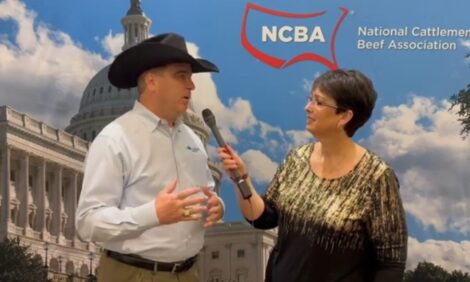



Water for Texans, by Texans: The path to self-reliance
Texans want to take charge and secure their water supplyWater is the lifeblood of Texas agriculture, and nowhere is that more critical than in the Rio Grande Valley. For too long, we’ve been at the mercy of Mexico, waiting on them to deliver on empty promises stemming back to a water treaty negotiated in 1944 — eighty years ago! Mexico has now fallen behind, once again, in providing more than 900,000 acre-feet, or about 1.1 billion cubic meters of water they owe to Texas and the U.S., and again, they’ve shown they can’t be trusted as reliable partners. It’s time to stop whining about it and act. Texans need to pull themselves up by their bootstraps, take charge, and secure our water supply.
While I've called on the Biden-Harris Administration to put the heat on Mexico to hold up their end of the 1944 Water Treaty, we all know better than to count on them to get the job done. The last sugar mill in Texas shut down due to water shortages, and our citrus industry is barely hanging on. We can’t let this continue. It’s time to bring some “cowboy logic” back to the situation and start taking smart, decisive action on water management. Our farmers, ranchers, and cities depend on us doing so if we are going to continue to help feed and fuel our nation.
To fully maximize our water resources, we must prioritize capturing stormwater, reusing treated water, upgrading the efficiency of our delivery systems, increasing storage capacity, and ensuring long-term water movement across Texas. All of this costs money. How do we pay for it? We pay for it by accessing funds already paid by Texas taxpayers from places like the Texas Water Development Board, various federal infrastructure programs, and accessing Texas Department of Agriculture grants. By doing that, we can tackle aging infrastructure, boost existing water supply projects, and kick-start new ones.
Our irrigation systems in Texas are among the oldest in the nation, and they’re way past due for an upgrade. In the Rio Grande Valley, irrigation districts lose up to 40% of their water due to a myriad of reasons. And it’s not just rural areas—our urban infrastructure is crumbling too, with water losses reaching as high as 30%. Just last year, outdated systems caused six major cities to lose a staggering 88 billion gallons of water, costing us millions and putting a serious strain on our already limited supply.
Rainwater harvesting is a time-tested solution that’s as old as Texas itself. It’s not just for gardeners—it’s a smart move for all of us. We pour millions into managing stormwater every year, only to watch it go to waste. Instead, let’s turn that runoff into a valuable resource by capturing and storing it. Investing in rainwater harvesting during heavy rains can capture runoff before it reaches the Gulf of Mexico and develop off-channel storage to ensure we’re making the most of every drop.
There’s real hope for progress if we take charge of the problem instead of just complaining about it. Cities like Alice, Big Springs, and El Paso are already leading the way. Alice is set to open its brackish water treatment plant this year, providing 2.7 million gallons of fresh drinking water daily. Meanwhile, El Paso has cut its reliance on the Rio Grande River by half with its wastewater treatment plant and reduced water losses by 475 million gallons in the past year, thanks to smart investments in pipeline replacements. All three of these cities are now or soon will be generating new sources of fresh water. Others need to follow their lead.
We also need to promote water-smart landscaping. Investing in community education on xeriscaping and promoting native grasses like buffalo grass can help reduce the strain on our water supply from urban areas.
Let's consider the potential for using brackish water instead of fresh water for fracking. We can treat it, use it, and then recycle it for another round of fracking. It's a smarter way to conserve freshwater supplies while still getting the job done and not harming our important oil and gas industry.
From hitting Mexico with sanctions to holding back State Department funds and boosting United States Department of Agriculture (USDA) relief, Texas lawmakers are stepping up to help our state recover from this relentless drought. The Texas congressional delegation have joined me in calling out Mexico's total disregard for honoring the 1944 treaty. But let’s be clear—Texans can’t sit around waiting on Washington, D.C or Mexico. It’s time for Texans to roll up our sleeves and take charge of developing our own water-generation solutions across our great state.
The bottom line is this: Texans have the know-how, the technology, the grit, and the financing to secure our water future. But we must quit complaining, get off our tails, and act. Let’s not leave the future of Texas agriculture—and our state’s economy— to the chance that someday Mexico might uphold its end of the bargain.
We've waited long enough. The time for action is now, and it’s up to us, as Texans, to determine our own destiny.


